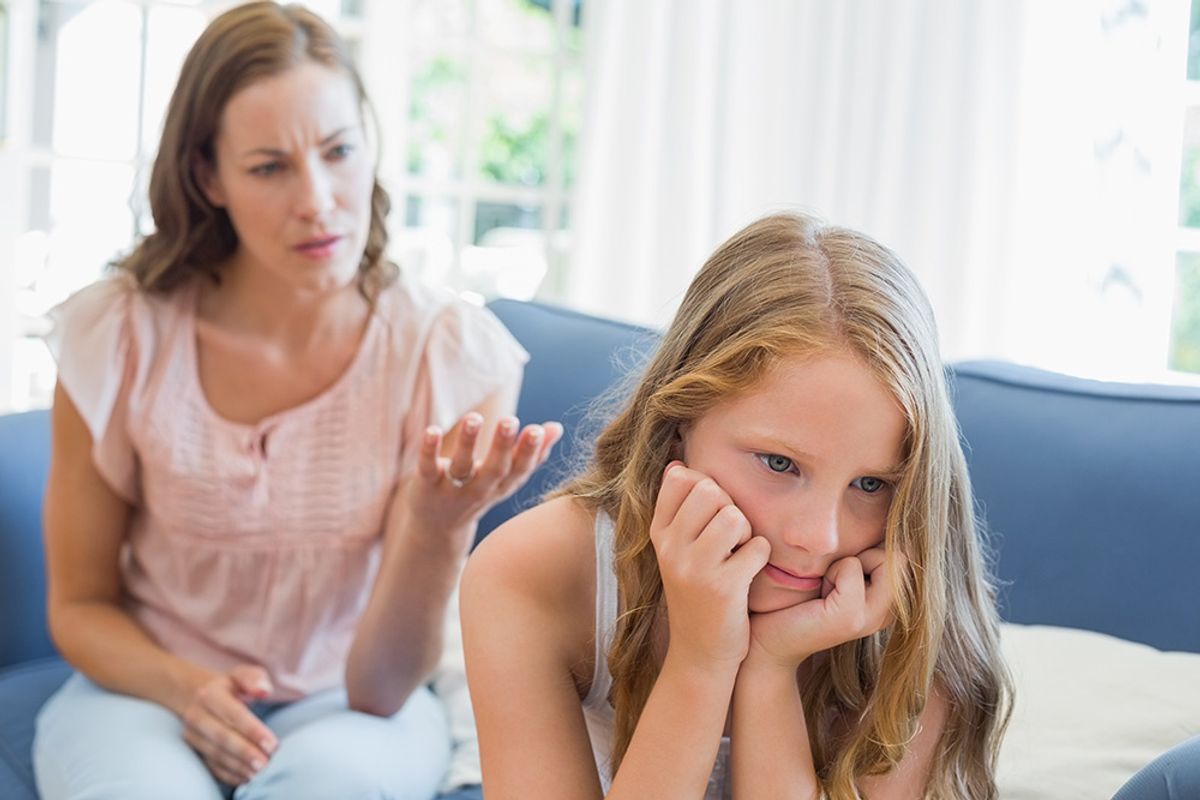
Continuing dance classes virtually during the pandemic is important for a child’s sense of community and physical and emotional health. But it’s understandable for them to be increasingly frustrated by learning via screens. (It’s also understandable for those lucky students who’ve gone back to in-person classes to be frustrated by necessary social-distancing and mask-wearing procedures in the studio.) Zoom fatigue, the lack of peer energy during classes and grief over canceled events can be disheartening, and may even lead to some dancers reaching a breaking point.
So what do you do when your child suddenly wants to quit dance? We asked licensed clinical psychologist Dr. Christina Donaldson, an advisory panel member of Youth Protection Advocates in Dance who works with adolescent dancers, for her advice.
1. Ask questions without problem solving.
“Find a time to talk when you know you won’t be interrupted,” says Donaldson, admitting that sounds easier said than done these days. “There’s an incredible load on parents right now, and you likely don’t have a lot of bandwidth. But scheduling this special time with your child will make a difference.”
When you do talk, approach the discussion with curiosity. “I encourage parents to not problem solve or poke holes in their kid’s arguments. Just ask, ‘What is it that makes you not want to dance?’ ‘How long have you been thinking you don’t want to dance?'” Some kids will respond with a flurry of “I don’t know”s, which can be frustrating. But persistence is key. Try: “What is it about dance you no longer like?” “Have you felt this way before we went on Zoom?” “Is this new?” “What do you imagine you’d rather be doing?”
“Lots of times, kids feel that parents asking questions means they’re going to be criticized,” says Donaldson. “You want to ask questions in a way that makes clear there’s no judgment and no expectations.” She stresses the importance of a calm, curious tone.
2. Make improvements or changes.
From your initial dialogue, you may learn that your child still loves dancing, but an element of home-based training isn’t working for her. “Maybe she doesn’t have the right floor for tap classes or he needs a better ballet barre,” Donaldson says.
If it’s an issue of burnout over the same routine, try switching things up instead of quitting altogether. Your child may be interested in experimenting with a new style or taking virtual classes from master teachers outside your regular studio. The hope is that, together with your dancer, you’ll figure out a way to make dancing fun again.
3. Watch out for any red flags.
In some cases, a child’s sudden urge to quit may point to a potential cause for concern—a deeper issue that should be addressed by a mental health professional. Notice if your child is more easily frustrated and angry, extra broody or sad, anxious, unable to self soothe, or especially if you see a change in eating habits. If there’s anything that makes you raise an eyebrow, follow your instincts and seek help.
“A big concern, on an extreme end,” says Donaldson, “would be an eating disorder or self-harm brought on by anxiety. Instead of constantly looking at themselves in a mirror, now they’re on Zoom and seeing themselves through the lens of a computer screen.”
4. Enforce physical activity.
If your child is simply not finding any joy from dance right now, allow them the space to take a break—with an understanding that they must find another physical activity to do instead. “Movement produces endorphins that help with mental well-being,” says Donaldson. “We need to keep their bodies moving, especially as there’s so much sitting involved with virtual learning.”
Donaldson notes that scheduling physical activity will be especially important in areas with seasonal change. “I’m in California, so kids here can play outside all year long,” she says. “But on the East Coast or in the north, that’s going to be challenging with the weather.”
5. Keep the dance door open.
Quitting may come with its own sadness and grief, Donaldson says, and it’s important to honor those feelings, while letting your child know that “dance will always be there for them if they want to come back.” Bottom line: Don’t let classes become a source of stress or resentment just for the sake of sticking it out. Instead, foster a lifelong love of the arts by allowing your child to try new things. “You may find that your child returns to dance with even more certainty once they’ve explored other options,” says Donaldson.




